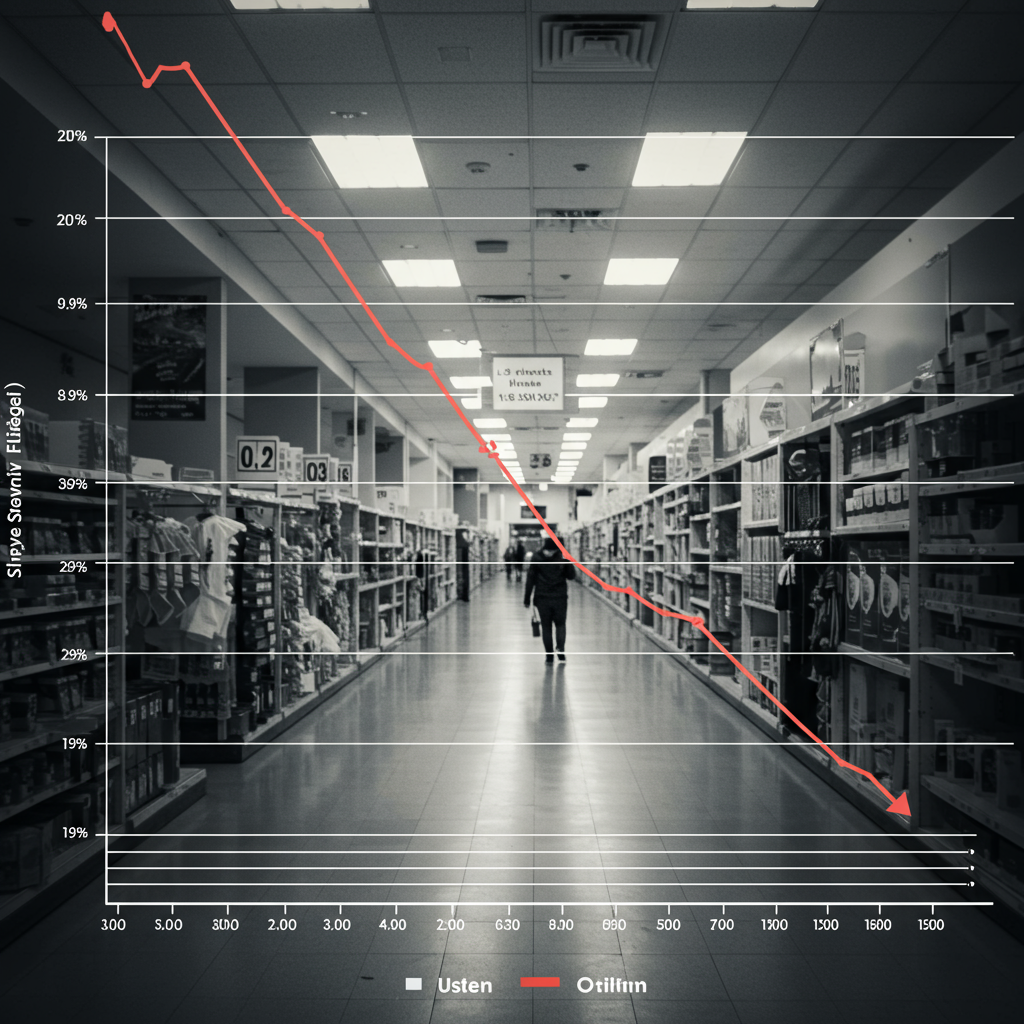U.S. consumer spending saw a significant pullback in May, with retail sales declining by 0.9%, the Commerce Department reported. This drop was steeper than the 0.6% fall economists had anticipated, signaling potential caution among consumers amidst ongoing economic uncertainties.
The May decline follows a revised 0.1% loss in April, indicating a slowing trend in retail activity. While sales were up 3.3% compared to the previous year, the month-over-month contraction was notable and attributed to several factors, including a drop in gasoline sales and broader unease regarding the economic outlook, tariffs, and geopolitical tensions.
Breaking Down the May Retail Sales Report
Looking beyond the headline number reveals varied performance across different sectors:
Excluding autos, sales fell 0.3%, also missing forecasts which had predicted a modest 0.1% gain.
However, a key measure known as the “control group” – which excludes auto dealers, building materials stores, gas stations, and others, and is used in calculating Gross Domestic Product (GDP) – actually increased by 0.4%.
This mixed picture suggests that while discretionary spending on items like cars and building supplies slowed significantly, consumers maintained spending in certain other categories.
Key Sector Performance:
Several major retail categories experienced declines in May:
Building materials and garden equipment saw sales drop by 2.7%.
Gasoline station receipts fell 2%, largely influenced by lower energy prices during the month.
Motor vehicles and parts dealers reported a substantial 3.5% decrease in sales.
Bars and restaurants, often seen as a gauge of discretionary social spending, also saw sales dip by 0.9%.
Conversely, some sectors managed gains:
Miscellaneous retailers experienced a 2.9% increase.
Nonstore retailers (primarily online sales) rose by 0.9%.
- Furniture and home furnishings stores saw sales edge up 1.2%.
Why the Pullback?
Economists point to several potential reasons for the broad slowdown. Heather Long, chief economist at Navy Federal Credit Union, noted that consumers may have pulled forward some larger purchases, like cars, into March ahead of anticipated tariff announcements, leading to a slump in later months.
“Families are wary of higher prices and are being a lot more selective with where they spend their money,” Long commented. “People are hunting for deals and aren’t eager to buy unless they see a good one.” This suggests that economic uncertainty and concerns over potential inflation due to trade disputes are making consumers more cautious and price-sensitive.
Despite the retail sales dip, surveys showed a slight improvement in consumer sentiment in May, although sentiment had been on a downward trend earlier in the year, partly due to trade war fears. Easing trade rhetoric during a negotiating period may have offered some relief to sentiment, but it didn’t translate into robust retail spending in May.
Broader Economic Context
The weaker-than-expected retail sales data comes amidst fluctuating economic signals. While the U.S. economy contracted at a 0.2% annualized rate in the first quarter, forecasts like the Atlanta Federal Reserve’s GDPNow tracker had projected a strong rebound in the second quarter (pegged at 3.8% before this retail sales release). The May retail sales figures could influence updated second-quarter GDP estimates.
In related economic news, import prices were flat in May, meeting forecasts, while export prices fell by 0.9%. Following the retail sales report, stock market futures traded negatively, and Treasury yields declined, reflecting investor reaction to the slowing consumer activity.




